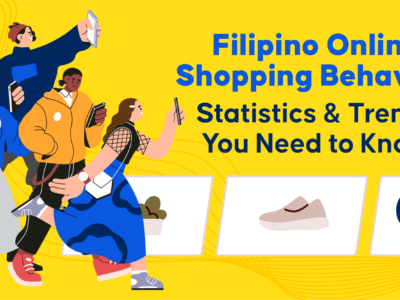Retailers are always on the look-out for new channels when trying to get their products to sell. Getting them on brick and mortar shelves just doesn’t do the trick anymore.
In today’s world, you can order things from the comfort of your own home and have them delivered pretty quickly. That home can be in any country. Advertisers no longer have to look at just local audiences for profits. Thanks to e-commerce and the digital age, you can spread your message to the whole world.
Here are some tips to help you understand how you can easily go from one to the other:
-
Language is still a barrier
Communication is the basis for marketing. You’re communicating your wish to sell a product or service to the buyer. Keep in mind that language isn’t just the words you say. One of the more important aspects of communication is context. Transferring your business to another area will require understanding how this area communicates and what the people who live there value.
Just getting the country right doesn’t cut it, either. There are significant differences in shopping habits between east-coast and west-coast Americans, for example. Advertising on the west coast would speak to people who seek healthy alternatives and fitness, while the east coast prefers luxury and enjoyment.
What does your business need to do to adapt its communication to different environments? Your language might be just right for the local market you started in, but translating it to different cultures will require effort. Polls and local consumer information might help you, or perhaps you might hire a marketing advisor in the area. Having a look at social media can also give you much of the information you need.
-
Global and local are surprisingly similar

You might think global marketing strategies are far from their local counterparts, but there are definitely similarities. A successful company doesn’t need to change a lot of their ad tactics when they go worldwide. If you’re making bank with local sales and local methods, the system already works to a degree. You can go out and apply that same mantra to international markets. Methods needn’t change much for a broader audience, just switch up the language and cultural values a bit. You should also take into account that buyer sentiments vary from country to country.
Large companies sometimes forsake the widespread adverts of older times. To a group of potential new buyers, the old ways can seem like a quick cash grab. Local, friendlier methods can be applied to a broad audience with a couple of modifications. The marketing success you’ve achieved shouldn’t be thrown aside and replaced. You stick to what works. Now, this doesn’t mean copy-pasting the exact methods you used thus far, just upgrading them. You still need to research the market you’re getting yourself into.
-
Payment methods can vary
Getting paid is the name of the game when it comes to marketing. Money really is the most universal language and every country can communicate using it. The problem is that even spending money has dialects that can vary from country to country. As a company, this can present a significant hurdle when doing business. It’s estimated that about 77% of UK companies don’t have payment methods that allow them to spread into the European market. The people of France still use cheques while the world inches towards PayPal.
Supporting different payment methods can cost you lots of money on its own. For your brand to be able to spread to varied locations, you need to be well prepared. You have to start budgeting and planning ahead for certain markets. It might have a high initial cost, but the gain in the audience will be well worth it. You don’t want to be left trailing behind your competitors in any country.
-
Shipping should be easy

Getting the product out there is the whole point of advertising it. People wanting to buy your stuff doesn’t matter if they can’t receive it. Shipping products is a herculean task in its own right, but there are additional problems tackled onto it. The costs can vary from insignificant to astronomical. This is another thing that varies between countries and continents.
Shipping in the USA will cost you a whopping six dollars per kilogram sent out. The same product moved to China, on the other hand, will only cost you about a dollar or so. If you decide to introduce free shipping for something, you really need to think about location first.
Money isn’t everything to customers, but it is in an indirect way. As the saying goes, time is also money. Getting the product in a timely manner is going to be the second priority for your buyers. This can prove to be difficult in some places. People will expect their bought goods to land on their doorstep tomorrow, regardless of where they are. Cooperation with post and delivery will have to be on your list of priorities.
-
Social media is a necessary tool
The twenty-first century is going to be remembered as the social media age. At least so far it has been. It has penetrated just about every facet of life, up to and including work and school. Even if you wanted to avoid it you couldn’t manage to. As an individual, this might be annoying, but to a business social media is a gold mine. You can share your brand with the entire world directly, or create local advertisements on local social media pages. It has endless potential to make or break a business and it can do it fast.
Diversity is important in social media, as guys from GWM always point out, putting your ads on Facebook alone won’t cut it. Everything from Twitter to LinkedIn should be taken advantage of. You don’t get to disregard personal things, either. E-mail is still king. This method might be a bit trickier to use, as it is pretty direct. Communicating directly with customers like this can backfire, so you might need consultation from specialized sources.
-
Internet information reigns supreme

Knowledge is power. There is no profession with more use for knowledge than marketing. Getting to know your consumer base used to be a difficult task. In olden times you had to poll people and get uncertain information regarding your product. Knowing what people wanted was a trial-and-error kind of game. Nowadays you can rest easy knowing that they will give you all the information you ever wanted on a silver platter. And we’re not just talking about customer reviews.
The internet is a goldmine of information on everyone. Much of it is submitted willingly, and this allows you to know exactly what your audience wants. More importantly, you know where people want it. Consumer data is the future of advertising. Some see it as an invasion of privacy, but it’s more nuanced than that. You don’t know the person that wants to buy your product or where they might be. You just know someone might need a certain service and that you need to advertise in their general location. There are no names attached. It’s a numbers game and the odds are in your favor.
Conclusion
E-commerce advertising is already a pretty competitive landscape. Going global is like going from the pot to the frying pan. Differences in language and local laws can hamper your profit, but only so far. With enough determination, you can get your message across oceans with ease. Follow some of these pointers and you’ll be a shoo-in when it comes to global E-commerce.





